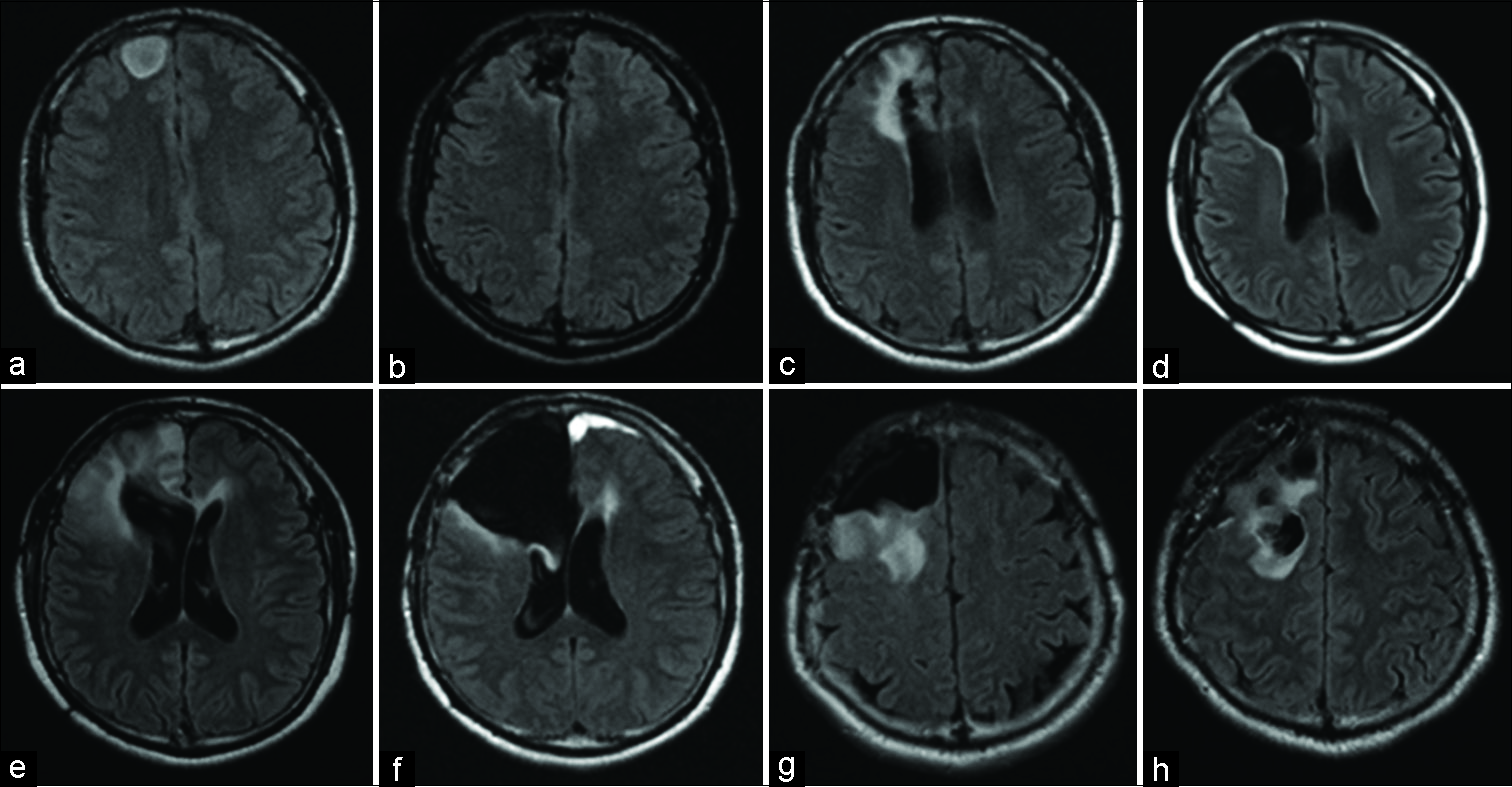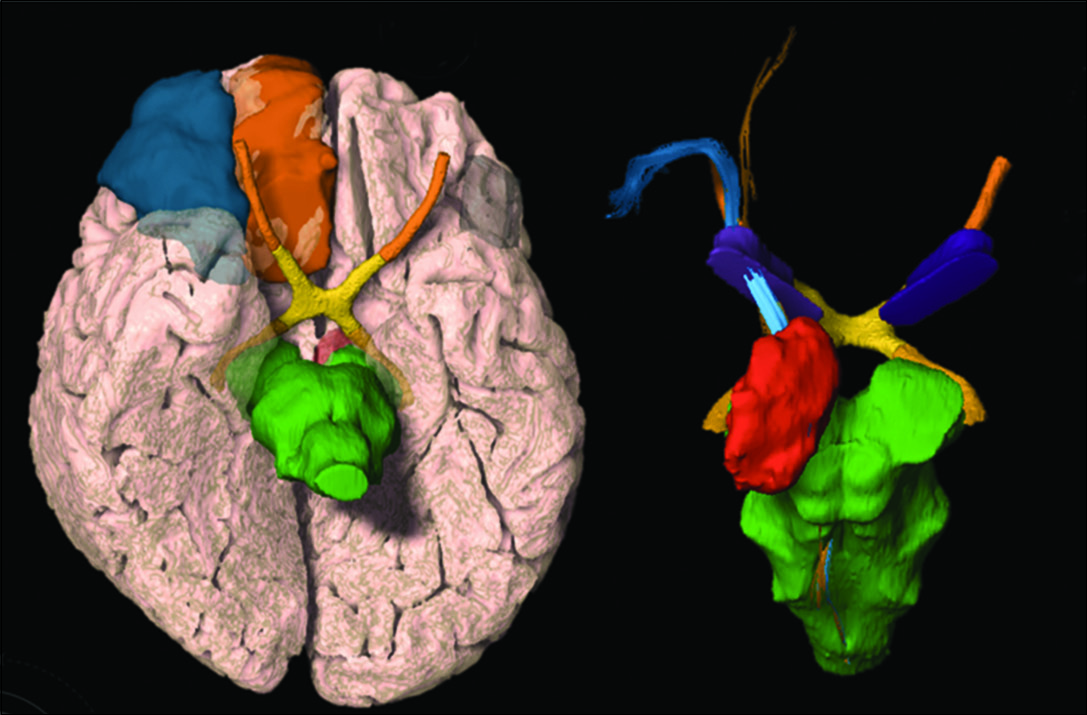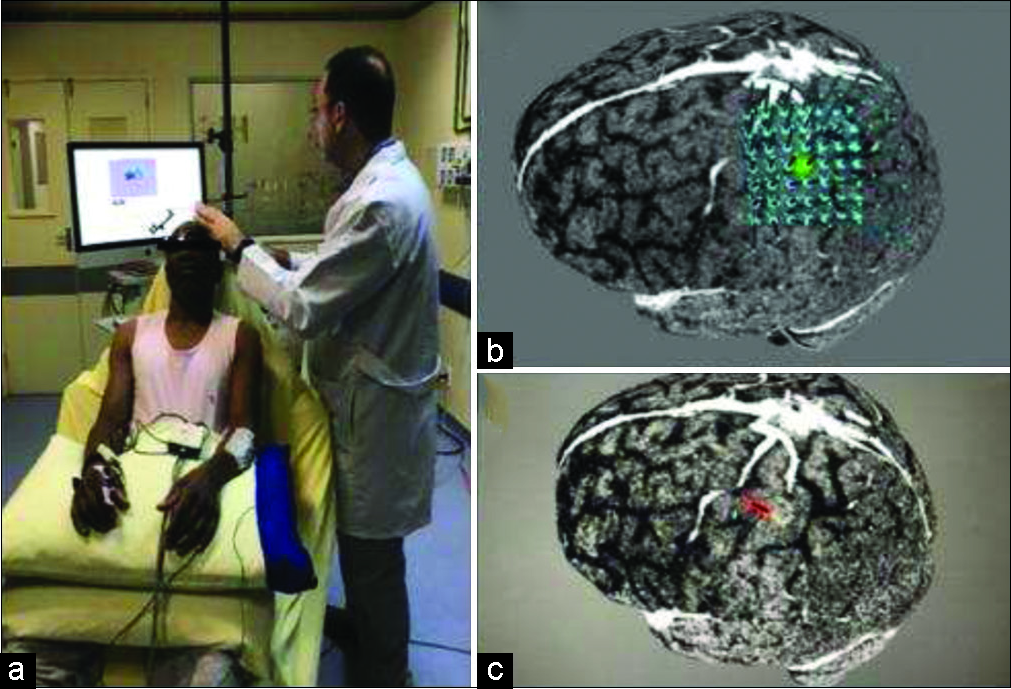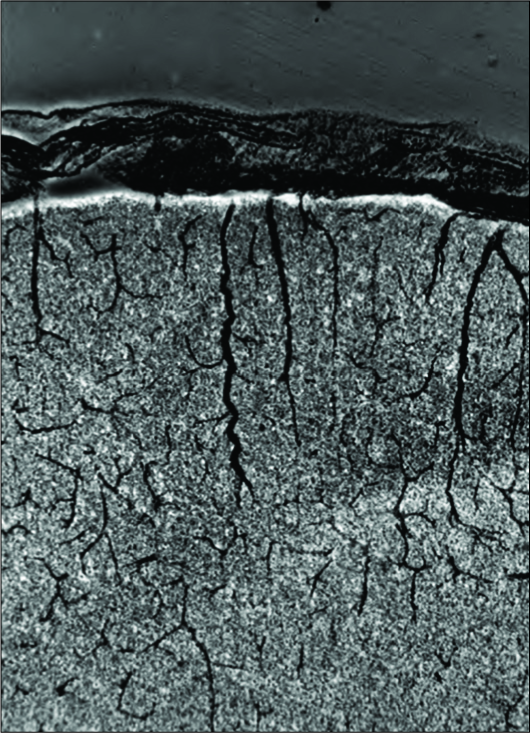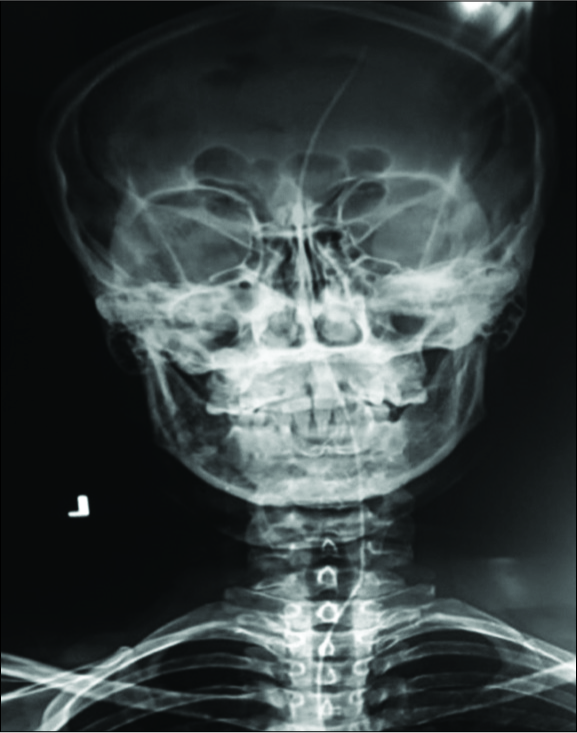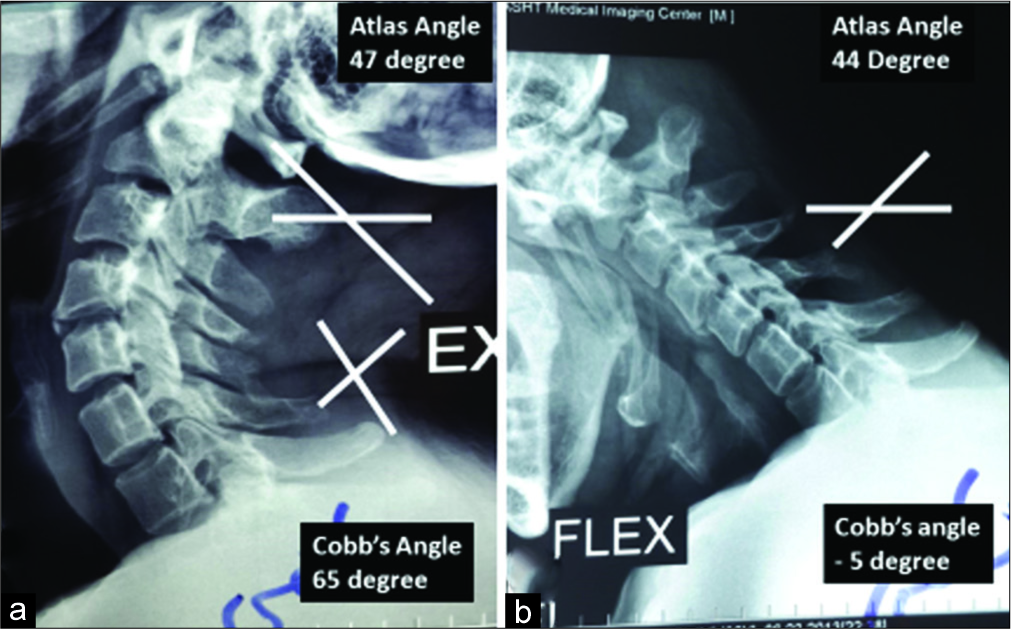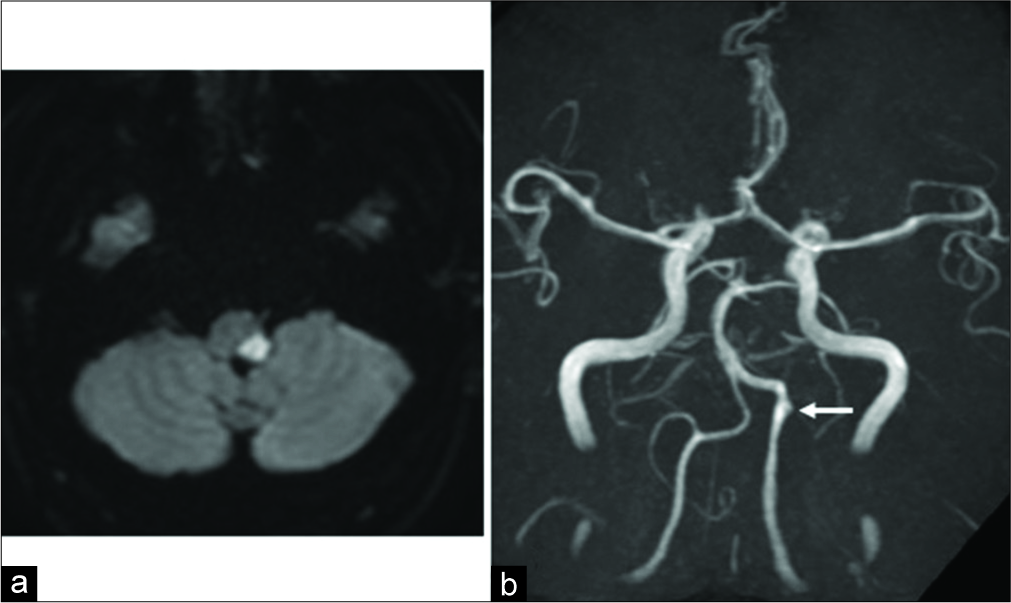An autopsy case of widespread brain dissemination of glioblastoma unnoticed by magnetic resonance imaging after treatment with bevacizumab
Date of publication: 05-Jul-2019
Background: Although glioblastoma has been shown to be able to disseminate widely in the intracranially after treatment with bevacizumab without any significant radiological findings, reports on such cases with subsequent autopsy findings are lacking.
Understanding gamma ventral capsulotomy: Potential implications of diffusion tensor image tractography on target selectivity
Date of publication: 05-Jul-2019
Background: The role of tractography in gamma ventral capsulotomy (GVC) planning is still unclear. This paper aims to describe the spatial distribution of medial orbitofrontal cortex (OFC) and lateral OFC fibers passing through the anterior limb of the internal capsule (ALIC) and analyze quantitative tractography parameters that differentiate obsessive-compulsive disorder (OCD) individuals from other neurosurgery functional patients (morbid obesity and Parkinson’s disease [PD]).
Surgical management of Bertolotti’s syndrome in two adolescents and literature review
Date of publication: 05-Jul-2019
Background: Bertolotti’s syndrome is defined by back pain and/or radicular symptoms attributed to a congenital lumbosacral transitional vertebra (LSTV). There are few studies that discuss the surgical management of Bertolotti’s syndrome. Here, we report long-term outcomes after resecting a pseudoarthrosis between the sacrum and L5 in two teenage patients, along with a review of literature.
Computed tomography-guided navigated transcranial magnetic stimulation for preoperative brain motor mapping in brain lesion resection: A case report
Date of publication: 05-Jul-2019
Background: Navigated transcranial magnetic stimulation (nTMS) is a well establish a noninvasive method for preoperative brain motor mapping. We commonly use magnetic resonance imaging (MRI) to supply the nTMS system. In some cases, MRI is not possible or available, and the use of computed tomography (CT) is necessary. We present the first report describing the association of CT and nTMS motor mapping for brain lesion resection.
Unedited microneurosurgery of a falcotentorial meningioma
Date of publication: 05-Jul-2019
Background: Falcotentorial meningiomas are pineal region meningiomas that arise from the dura of the tentorium cerebelli and posterior part of the falx. These tumors are commonly supplied by branches of the internal carotid artery such as the meningohypophyseal trunk, inferolateral trunk, and anterior choroidal artery. Less frequently, branches of the ophthalmic artery, vertebral artery, or external carotid artery are also involved. Based on neuroimaging studies, falcotentorial meningiomas may be classified as anterior, superior, inferior, and posterior types. Here, we present an unedited microsurgical resection of a superior falcotentorial meningioma.
Potential improvement of survival statistics for glioblastoma multiforme (WHO IV)
Date of publication: 28-Jun-2019
Abstract
The present-day treatment of a glioblastoma multiforme IV (glioblast) is by surgery, radiation, and chemotherapy. Unfortunately, the current treatment has not significantly improved the survival statistics of this tumor. There are now two relatively new surgical procedures that may improve the survival statistics of this malignancy. One of these procedures is the intraoperative use of the drug 5-aminovolumic acid (ALA), which fluoresces a red color in malignant brain tissue that is not observed in normal brain tissue. This allows a neurosurgeon to distinguish brain tissue infiltrated by malignant cells, thus allowing a more complete resection of the tumor. Another procedure that has the potential to improve the survival statistics of glioblasts is the use of the omentum. Direct placement of the omentum on a brain infiltrated by malignant cells would allow omental blood vessels, known to be completely clear of endothelial cells, to penetrate directly into the underlying brain. The blood flow through omental blood vessels could be expected to carry chemotherapeutic agents throughout the involved brain, thereby totally bypassing the blood–brain barrier. Combining a tumor resection using 5-ALA and placing the omentum on the brain may prove instrumental in improving the survival statistics of patients suffering from a glioblast.
Cranial migration of lumboperitoneal shunt: A case report and review of literature
Date of publication: 28-Jun-2019
Background: Lumboperitoneal shunt is an easy and effective way of managing benign intracranial hypertension (BIH) and other causes of increased intracranial pressure. Yet, it is associated with a relative high failure rate. Proximal migration of the shunt is rare and only few cases have been reported.
Unstable os odontoideum contributing to cervical myelopathy and obstructive sleep apnea
Date of publication: 28-Jun-2019
Background: Sleep apnea is characterized by repetitive cessation of breathing during sleep. It may be attributed to obstructive, central, or mixed pathologies close to the upper airway resulting in a decreased diameter of the oropharyngeal tract.
A case of unilateral vertebral artery dissection progressing in a short time period to bilateral vertebral artery dissection
Date of publication: 28-Jun-2019
Background: Vertebral artery dissection (VAD) is an important cause of stroke in young and middle- aged people. Bilateral occurrence of VAD is generally considered rare, but the number of reports of bilateral VAD has been increasing in recent years. In this paper, we report a case of de novo VAD on the contralateral side presenting with subarachnoid hemorrhage in the acute stage of cerebral infarction due to unilateral VAD.
A case of leptomeningeal metastases of human epidermal growth factor receptor 2-positive breast cancer that responded well to lapatinib plus capecitabine
Date of publication: 28-Jun-2019
Background: Leptomeningeal metastases (LM) pose the most difficult form of cancer metastasis to treat and portend a poor prognosis. Standard treatment has yet to be established, and intrathecal chemotherapy and whole- brain radiotherapy are administered on an empirical basis.


